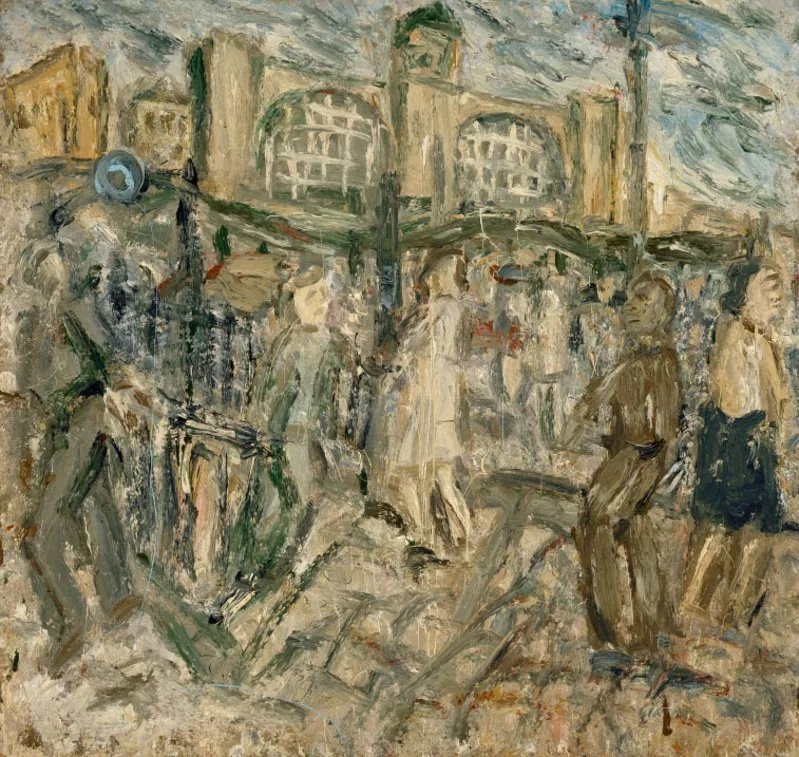It's a Small World
6 April 2023
Insects making a fine jewellery impact.
Kim Parker
Kim Parker is a journalist, editor & 2022 Magnolia Cup jockey Bazaar UK, Telegraph Luxury, Times Luxx, Condé Nast Traveller, The Week, Vanity Fair.
Nature has been an eternal source of inspiration for jewellers, but nothing has quite captured their imagination, or ours, like reinterpreting the insect world in sparkling metal and gemstones. Consider how news feeds erupted in 1999, when Madeleine Albright, renowned for semaphoring messages with her accessories, wore an enormous bug-shaped chalcedony brooch to meet with Russian Foreign Minister, Igor Ivanov, just a few days after a Russian spy had been arrested outside the U.S. State Department. Or the internet frenzy that ensued twenty years later, when the-then Supreme Court President, Lady Hale, wore a glittering spider (yes, technically an arachnid) on her dress to deliver a ruling on Boris Johnson’s prorogation of parliament.
“There’s such a deep history behind insect jewellery, stretching all the way back to the Ancient Egyptians and their engraved scarabs,” says Kate Flitcroft, a senior specialist at Bonhams. “The beetle was revered as a symbol of rebirth, as well as the sun god, Ra, so was carved into ornamental stones like carnelian and turquoise and incorporated into protective amulets and seals or placed onto mummies before burial. More than embellishment, these jewels were an integral part of Egyptian culture and religion.”
Centuries later, the Napoleonic era saw the humble bee elevated into symbol of power across noble and fashionable society. Napoleon chose the insect as his personal emblem for his 1804 coronation due its similarity in shape to France’s floral symbol, the fleur-de-lys, and to align himself with the fifth-century king, Childeric I, a key figure in the founding myths of France, whose burial horde included hundreds of garnet-encrusted bee jewels. Adopted by the Imperial court, the Napoleonic bee swarmed across interior furnishings, clothing and, of course, jewellery (it is still the emblem of Chaumet, the official jeweller to Empress Josephine, and adorns the house’s Bee My Love collections to this day).
It was the Victorians that ensured the vogue for insect jewellery really took flight. “Its popularity surged from the 1860s and 70s onwards, into the Art Nouveau period at the beginning of the 20th Century,” says Flitcroft. “With rapid urbanisation came a profound nostalgia for the countryside and its creatures, including insects, which was reflected in art and fashion.” Alongside this came a revived interest in Ancient Egypt and its scarabs, which accompanied the construction of the Suez Canal, as well as a growing fascination with natural science that arrived with Darwinism and the discovery of fossils. As a result, embellished butterflies, ladybirds, spiders, cicadas and dragonflies became objects of desire at every price point – with some women even wearing live, gem-encrusted beetles attached to gold chains.
“Above all, the Victorians craved novelty and insect jewels were beautiful, slightly repulsive and a talking point all at once. They wore fine jewellery versions as well as paste, typically as brooches pinned to sleeves, bodices or up in their hair,” says Josephine Odet, a fine jewellery specialist and gemmologist, adding that the symbolism attached to specific insects only enhanced their appeal. “Ladybirds were considered lucky, butterflies were about transcendence, dragonflies represented courage, and scarabs symbolised eternity,” she explains. Beyond this, insect jewels provided designers with an ideal canvas for showcasing their craftsmanship to an increasingly affluent audience. “Their appeal has really endured because of their scale. Creating a life-sized insect piece, with a range of gems, materials, enamels and techniques like engraving, allows jewellers a huge range of creativity for something that is still very wearable,” says Odet.
Annoushka Ducas - Mythology 18ct Rose Gold Blue Topaz Beetle Charm
London-based jeweller Annoushka Ducas, who has been creating stag beetle rings and charms since 2018, agrees. “For me, using myriad colours to create a beetle is so exciting because I can be really playful with the stones,” she says. Meanwhile, jewellery artist Cindy Chao relishes the challenge of sculpting a one-of-kind butterfly as part of her annual Black Label collection. “They demonstrate my metamorphosis as an artist. I use them as a challenge to advance my techniques and those of my craftsmen. It’s also a reminder that life must be lived to the fullest,” she says. At Sabbadini, the bee has been a bestselling motif since the 1980s, when founder Alberto Sabbadini crafted a brooch for his wife, Stefania, as a symbol of vivacity and good fortune, and enables the Italian house to show off its gem-setting prowess across rings, earrings, cuffs and necklaces.
“Jewellery trends have come and gone, but insects have never really left us,” observes Kate Flitcroft, who has noticed a rise in the popularity of antique pieces at auction over the past two years. “They are still highly collectible. All the big makers like Cartier, Van Cleef & Arpels, Tiffany and Boucheron have their own versions and those always perform strongly. But even the Victorian paste pieces sell well, fetching at least double their high estimates.” When it comes to compiling your own mini menagerie, Flitcroft advises picking pieces that speak to you and always buying the best quality you can afford. “Many insect jewels also come with interesting boxes, which makes them very alluring to collectors,” she adds. Josephine Odet, who has a fondness for Lalique’s Art Nouveau dragonflies, believes our current enthusiasm for insect jewels will only continue. “Perhaps it’s because we’re entering a new age of nostalgia for the environment since we’re rapidly destroying it. Or perhaps, with everything that’s going on in the current climate, we just can’t resist the fact that they make us smile.”
































